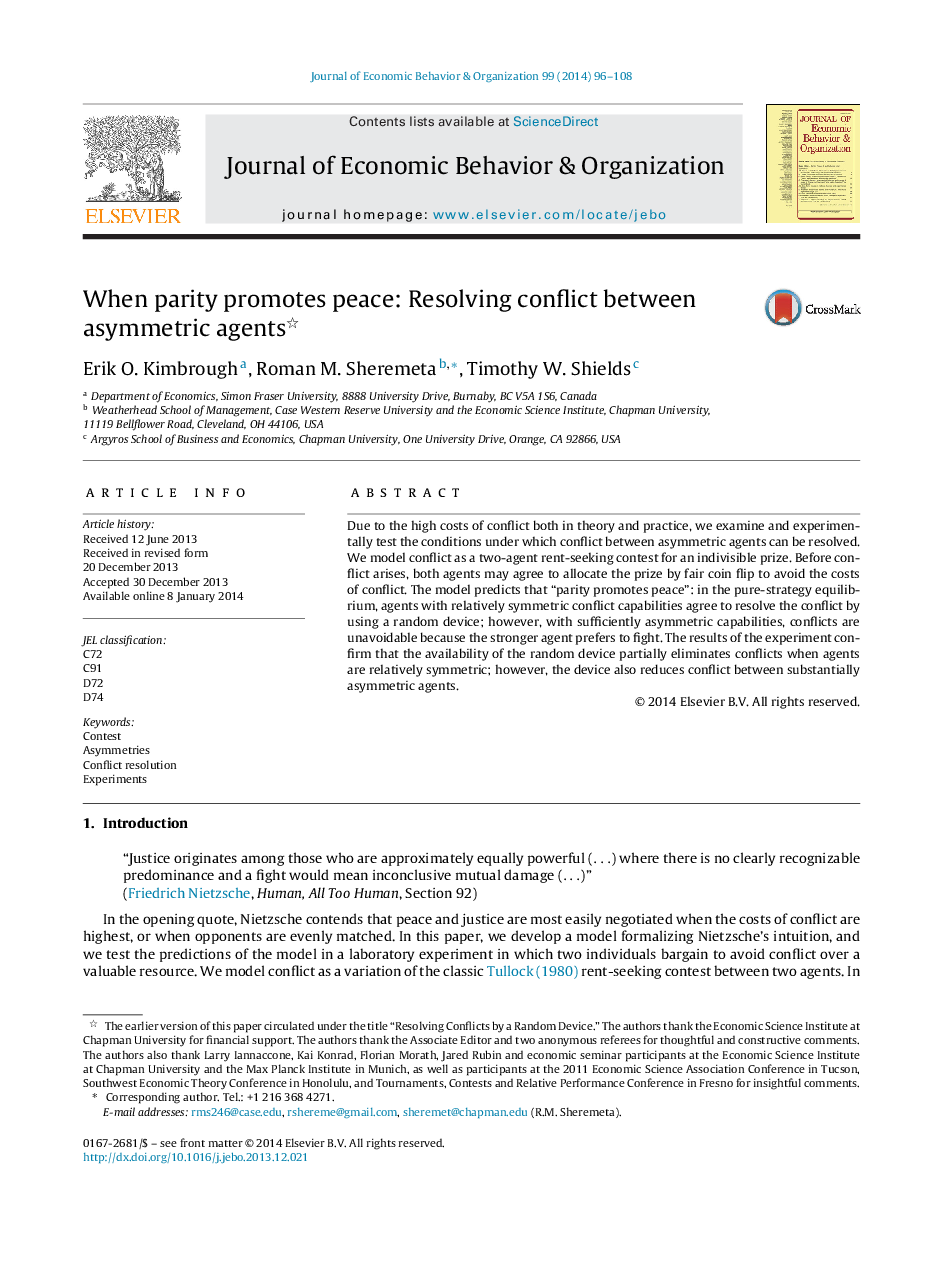| Article ID | Journal | Published Year | Pages | File Type |
|---|---|---|---|---|
| 7243589 | Journal of Economic Behavior & Organization | 2014 | 13 Pages |
Abstract
Due to the high costs of conflict both in theory and practice, we examine and experimentally test the conditions under which conflict between asymmetric agents can be resolved. We model conflict as a two-agent rent-seeking contest for an indivisible prize. Before conflict arises, both agents may agree to allocate the prize by fair coin flip to avoid the costs of conflict. The model predicts that “parity promotes peace”: in the pure-strategy equilibrium, agents with relatively symmetric conflict capabilities agree to resolve the conflict by using a random device; however, with sufficiently asymmetric capabilities, conflicts are unavoidable because the stronger agent prefers to fight. The results of the experiment confirm that the availability of the random device partially eliminates conflicts when agents are relatively symmetric; however, the device also reduces conflict between substantially asymmetric agents.
Related Topics
Social Sciences and Humanities
Economics, Econometrics and Finance
Economics and Econometrics
Authors
Erik O. Kimbrough, Roman M. Sheremeta, Timothy W. Shields,
